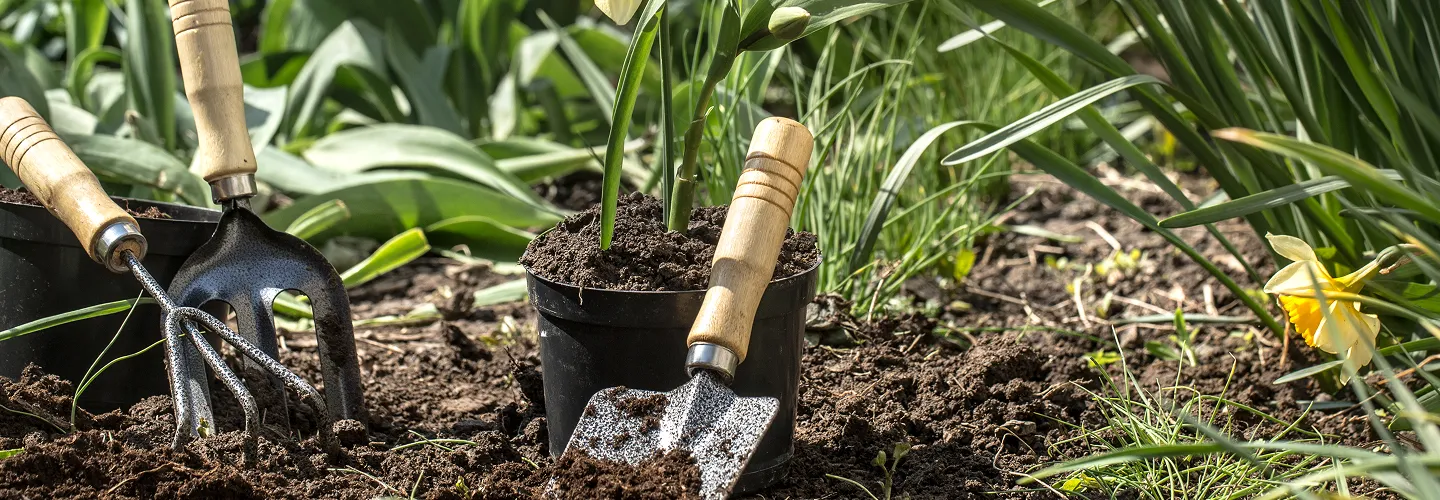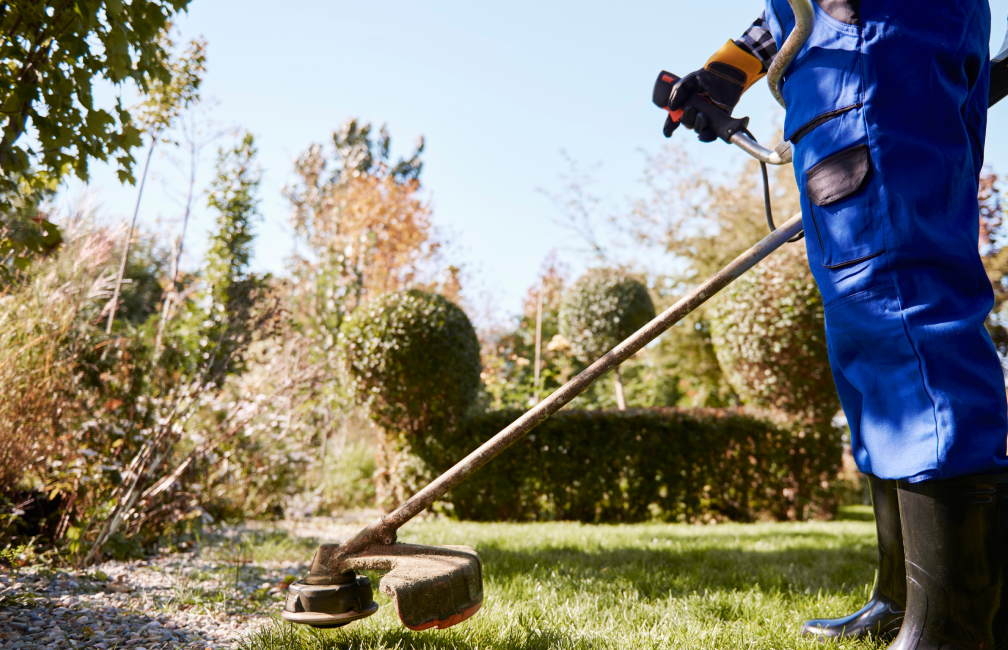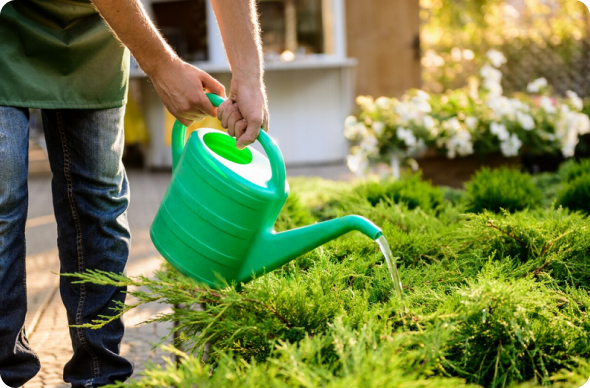
East Bridgewater Lawn Aeration Services
Choose our expert lawn aeration services to revitalize your grass, improve soil health, and ensure a lush, resilient lawn that stands out all season long.
Get a Free QuoteWhen to Schedule Lawn Aeration in East Bridgewater, MA – Seasonal Guide
In East Bridgewater, MA, timing your lawn aeration is crucial for achieving a lush, healthy yard. The best periods for aeration are typically early spring and early fall, when the soil is moist but not saturated and grass is actively growing. Local neighborhoods like Sachem Rock and the areas surrounding Robbins Pond often experience compacted soils due to heavy foot traffic and clay-rich earth, making regular aeration especially beneficial.
East Bridgewater’s climate features cold winters with late frosts and humid summers, so it’s important to avoid aerating when the ground is frozen or during peak drought periods. Pay attention to local environmental factors such as shade from mature maples in the Central Street area, or the sandy soils near Matfield River, as these can affect how and when aeration should be performed. For more information on local weather patterns and municipal guidelines, visit the Town of East Bridgewater’s official website.
Local Factors to Consider for Lawn Aeration in East Bridgewater
- Tree density and shade coverage, especially in older neighborhoods
- Soil type (clay, loam, or sandy soils)
- Recent precipitation and risk of drought
- Frost dates and seasonal temperature swings
- Terrain slope and drainage patterns
- Municipal restrictions or recommendations on lawn care
Benefits of Lawn Aeration in East Bridgewater

Improved Soil Health
Enhanced Grass Growth
Better Water Absorption
Reduced Soil Compaction
Increased Nutrient Uptake
Stronger, Greener Lawns

East Bridgewater Lawn Aeration Types
Core Aeration
Spike Aeration
Liquid Aeration
Slicing Aeration
Manual Aeration
Plug Aeration
Rolling Aeration
Our Lawn Aeration Process
Site Evaluation
Preparation of Lawn
Core Aeration
Cleanup and Inspection
Why Choose East Bridgewater Landscape Services

East Bridgewater Homeowners Trust Us
Expert Lawn Maintenance
Reliable Seasonal Cleanups
Competitive Pricing
Professional Team
Satisfaction Guarantee
Personalized Service
Contact East Bridgewater's Department of Public Works for Soil Core Disposal & Aeration Debris Management
Proper management of soil cores following aeration represents a critical component of responsible lawn care in East Bridgewater, Massachusetts. The town's Department of Public Works maintains specific protocols for organic yard waste disposal that directly impact homeowners managing post-aeration debris. Understanding these municipal requirements ensures environmental compliance while supporting sustainable soil management practices throughout this Plymouth County suburban community.
East Bridgewater Department of Public Works
175 Central Street, East Bridgewater, MA 02333
Phone: (508) 378-1600
Official Website: Department of Public Works
The department recommends allowing soil cores to decompose naturally on lawn surfaces, as this practice returns valuable organic matter and nutrients directly to the soil ecosystem. When collection becomes necessary due to excessive core volume, property owners must utilize biodegradable paper bags exclusively, avoiding plastic containers that violate Massachusetts General Law Chapter 111, Section 150A. Collected materials should be transported to designated transfer stations or included in municipal yard waste collection programs, ensuring proper composting and environmental protection. This approach proves particularly beneficial for East Bridgewater's glacial till soils that benefit significantly from organic matter incorporation to improve soil structure and water infiltration capacity.
Understanding Soil Compaction in East Bridgewater's Glacial Till and Outwash Plains
East Bridgewater's unique geological foundation consists primarily of glacial till uplands interspersed with sandy outwash plains and river terrace deposits, creating diverse soil management challenges throughout this southeastern Massachusetts suburban community. According to USDA Web Soil Survey data, predominant soil series include Paxton and Woodbridge fine sandy loams on upland areas, Canton and Charlton complexes on knolls and slopes, and Ridgebury fine sandy loam in poorly drained depressions. Outwash areas feature well-drained Windsor, Hinckley, and Merrimac sandy soils, while organic Freetown soils occur in wetland depressions along the Satucket River and Beaver Brook corridors.
The glacial till formations contain dense clay-rich subsoils that restrict water movement and root penetration, particularly under heavy foot traffic from suburban development patterns and recreational activities. The sandy outwash deposits drain more effectively but develop surface crusting and compaction layers that prevent water infiltration and oxygen exchange. These conditions manifest as standing water after rainfall events despite adequate storm drainage, extreme soil resistance to garden tool penetration in till areas, thinning grass coverage despite suburban irrigation systems, and extensive moss growth indicating poor soil structure and restricted drainage in compacted zones.
University of Massachusetts Extension Center for Agriculture, Food and the Environment
161 Holdsworth Way, Amherst, MA 01003
Phone: (413) 545-2766
Official Website: University of Massachusetts Extension
Professional aeration becomes essential when standard maintenance practices fail to address these underlying soil structure limitations, with glacial till soils typically requiring annual fall treatment using specialized equipment capable of penetrating dense clay layers, while sandy outwash areas benefit from biennial applications paired with organic matter amendments to improve water-holding capacity and prevent surface crusting.
East Bridgewater Conservation Commission Guidelines for Core Aeration Near Protected Wetlands
Environmental protection requirements significantly influence lawn aeration activities throughout East Bridgewater, particularly near the Satucket River, Matfield River, Beaver Brook, Stump Brook, Robbins Pond, and numerous protected wetland systems including the Great Cedar Swamp that characterize this suburban community's natural areas. The East Bridgewater Conservation Commission enforces strict buffer zone regulations prohibiting mechanical soil disturbance within 100 feet of certified wetland boundaries and 200 feet of perennial stream channels, as mandated by the Massachusetts Wetlands Protection Act.
East Bridgewater Conservation Commission
175 Central Street, East Bridgewater, MA 02333
Phone: (508) 378-1600
Official Website: Conservation Commission
Property owners planning aeration projects must obtain written approval when working within designated buffer zones or environmentally sensitive areas. The commission requires detailed site plans showing wetland boundaries, proposed aeration locations, and erosion control measures preventing soil displacement into protected water bodies. Timing restrictions apply during wildlife breeding seasons, typically limiting mechanical activities between March 15 and August 31 to protect sensitive aquatic ecosystems and nesting bird populations. Special attention focuses on properties near conservation areas and the extensive Great Cedar Swamp system where federal and state environmental regulations may also apply under multiple jurisdiction oversight.
East Bridgewater's Implementation of Massachusetts Soil Health Regulations for Aeration Operations
Massachusetts soil health regulations establish comprehensive standards for mechanical soil management practices, including core aeration operations conducted throughout East Bridgewater's suburban environment. These regulations require adherence to best management practices designed to protect groundwater quality and prevent soil erosion during aeration activities, while supporting municipal environmental protection objectives in this developing community where soil management directly impacts regional water quality and residential landscape sustainability.
Massachusetts Department of Environmental Protection
One Winter Street, Boston, MA 02108
Phone: (617) 292-5500
Official Website: Massachusetts Department of Environmental Protection
Massachusetts Department of Agricultural Resources
251 Causeway Street, Suite 500, Boston, MA 02114
Phone: (617) 626-1700
Official Website: Massachusetts Department of Agricultural Resources
Implementation focuses on timing restrictions, equipment specifications, and post-aeration stabilization requirements ensuring environmental protection while supporting effective suburban soil management. Aeration operations must avoid frozen or saturated soil conditions that could cause structural damage or excessive compaction, with operators maintaining proper licensing and demonstrating competency in glacial soil science principles. The primary benefits include improved water infiltration through compacted glacial till layers, enhanced organic matter incorporation in nutrient-challenged suburban soils, reduced surface compaction from residential traffic and recreational activities, and support for sustainable turf establishment in challenging glacial deposit growing conditions.
Post-Aeration Stormwater Management in Compliance with East Bridgewater's MS4 Program
East Bridgewater's Municipal Separate Storm Sewer System (MS4) program establishes specific requirements for managing stormwater runoff following lawn aeration activities, particularly in developed residential areas where soil disturbance could contribute to water quality degradation in local pond systems and the Satucket River watershed. The program aligns with federal Clean Water Act mandates while addressing local watershed protection priorities for suburban stormwater management and aquifer protection.
U.S. Environmental Protection Agency, Region 1
5 Post Office Square, Boston, MA 02109
Phone: (617) 918-1111
Official Website: U.S. Environmental Protection Agency, Region 1
Post-aeration stormwater management requires immediate stabilization of disturbed soil surfaces through overseeding, mulching, or temporary erosion control measures. Property owners must prevent soil particles from entering storm drainage systems during the critical establishment period following aeration, particularly important in suburban areas where runoff directly impacts local pond water quality and downstream ecosystems. The EPA NPDES permit system governs municipal compliance while providing enforcement mechanisms for addressing violations. Weather monitoring becomes essential, with contractors postponing operations during predicted rainfall events using National Weather Service Boston forecasting data to prevent sediment transport and protect suburban drainage infrastructure.
What Neighborhoods Do We Serve Throughout East Bridgewater, MA?
Our comprehensive understanding extends throughout East Bridgewater's diverse suburban neighborhoods, each presenting unique soil management challenges requiring specialized local knowledge based on development patterns and geological characteristics.
Central Village & Historic Town Center: Centered around Central Street and the historic town common, this area features properties with Paxton and Woodbridge fine sandy loams over glacial till, complicated by centuries of community development and established infrastructure. Properties near the town center experience moderate compaction from foot traffic and community activities, requiring annual core aeration focusing on breaking through hardpan layers while preserving mature shade trees and historic landscape features characteristic of New England town centers.
North East Bridgewater & Matfield River Vicinity: This area encompasses properties along the Matfield River and its tributaries, characterized by mixed outwash deposits including Windsor and Carver sands with poorly drained Ridgebury inclusions. Properties experience seasonal high water tables and variable drainage conditions, requiring careful aeration timing to avoid saturated conditions near wetlands while focusing on improving subsurface drainage and incorporating organic matter to enhance moisture retention in sandy upland areas.
Robbins Pond & Conservation Area Neighborhoods: Properties surrounding Robbins Pond and adjacent conservation areas feature mixed glacial deposits with seasonal water table fluctuations and recreational use impacts. Proximity to protected wetlands necessitates careful conservation commission coordination, with aeration focusing on improving drainage while avoiding impacts to sensitive buffer zones. These areas benefit from biennial aeration to break up surface crusts while preventing runoff into sensitive pond ecosystems through proper post-aeration stabilization.
South East Bridgewater & Residential Subdivision Districts: This area features predominantly suburban development on Paxton and Woodbridge soils, characterized by established neighborhoods with mature landscaping and recreational amenities. Properties often experience compaction from recreational activities, lawn maintenance equipment, and residential traffic patterns, requiring annual fall aeration with emphasis on maintaining established turf quality and supporting mature tree root systems in challenging glacial till growing conditions.
Great Cedar Swamp & Southeastern Wetlands: Properties adjacent to this significant wetland system feature Freetown mucky peat and other hydric soils with very high water tables and challenging growing conditions. While direct aeration in wetlands is prohibited, properties in buffer zones require strict adherence to Conservation Commission guidelines, with minimal disturbance techniques and comprehensive erosion control to protect the sensitive swamp ecosystem while supporting limited turf establishment.
West East Bridgewater & Rural Transition Zone: Properties extending toward more rural areas feature variable soil conditions where suburban development meets forested land uses, creating complex drainage patterns including Canton and Charlton fine sandy loams with significant root competition from mature trees. This area requires site-specific aeration approaches that address both rapid-draining sandy areas and seasonally saturated till inclusions while managing competition from established forest vegetation.
East Bridgewater Municipal Bylaws for Core Aeration Equipment Operation & Noise Control
Municipal noise ordinances significantly impact lawn aeration service scheduling throughout East Bridgewater, with specific regulations governing equipment operation hours and sound level limitations in residential areas. Town bylaws typically restrict mechanical lawn care activities to weekday hours between 7:00 AM and 6:00 PM, with weekend operations limited to 8:00 AM through 5:00 PM to minimize neighborhood disturbances in this suburban community where residential density requires consideration of noise impacts on adjacent properties.
East Bridgewater Building Department
175 Central Street, East Bridgewater, MA 02333
Phone: (508) 378-1600
Official Website: Building Department
East Bridgewater Board of Health
175 Central Street, East Bridgewater, MA 02333
Phone: (508) 378-1600
Official Website: Board of Health
Equipment specifications require compliance with EPA emission standards and Massachusetts noise pollution regulations, particularly near schools, healthcare facilities, and dense residential areas throughout the community. Professional contractors must maintain current licensing and insurance documentation while demonstrating competency in local regulatory requirements governing suburban soil management activities. Best practices include scheduling fall aeration as optimal timing with spring applications when soil conditions permit, coordinating with school schedules and community events to minimize disruption, providing immediate post-aeration care through suburban-appropriate seed mixtures and organic matter amendments, and timing operations to avoid peak residential activity periods when noise restrictions are most strictly enforced.